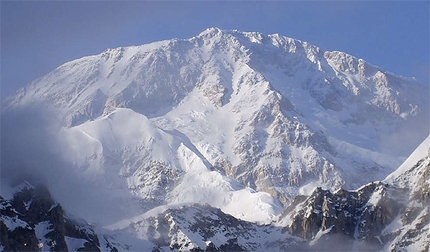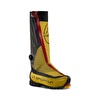Andreas Fransson and the Denali South Face ski descent

 1 / 6
1 / 6 Andreas Fransson
Andreas Fransson
"The most significant accomplishment of 2011 in the Central Alaska Range". These are the words that American alpinist Colin Haley used recently to describe the first ski descent of the South Face of Denali, carried out at the start of June by Swedish extreme skier Andreas Fransson.
The 3400m run had been playing in the back of the 28-year-old's mind for two years and understandably his ski made the news big time, after which Fransson sped up the Cassin Ridge with fellow Swede Kastengren in 33 hours and also skied the Messner Couloir on Denali's West Face. In between making tracks in Chamonix and rock climbing in Fontainebleau, Fransson now shares with us that first drop down the inhospitable South Face.
Hi Andreas, what was the original Alaska plan?
Well, I went to Denali to ski the South Face. It felt like the best challenge and adventure on this particular mountain. Not a hard ski, but big and with a start which is at quite a high altitude. At least 2, maybe 3 times bigger than anything I had been on before.
You acclimatised on Orient Express. Twice.
The South Face is a really big undertaking. To do it you have to acclimatise first and then be lucky with conditions as well as expose yourself to a high degree of objective danger for a very long time. Dropping in from the top is fairly committing and could feel like a big thing if one hasn't skied lots of big lines before. Orient Express itself isn't a very difficult ski. Just like the Gervasutti on the East Face of Tacul maybe, but three times bigger and at almost 20 000 feet. I just wanted to get as high as possible as fast as possible and that was the closest way to get high and then the fastest way to get down again. I did it 2.5 times actually.
Can you describe how you felt at the top, just before the start
I was really happy at the top because the weather was so good and for as far as I could see the run looked white. We had had really bad weather, strong winds had destroyed parts of the lower face but in truth I had expected worse higher up as well. I was happy because I got the chance to drop in, especially since we had quite a busy schedule and I knew I wouldn't get too many chances. We learnt on Denali that many people come there with lots of dreams and plans, but very few get what they came here for.
What about the ski
The skiing was easy, but then there was a little bit of ice so I quickly did a climbing traverse. The whole time I felt it was hot so I had staying put as an option in the back of my mind. When stone's started falling I didn't think too much, I just did what was the smartest option at the time: I stayed put.
How do you rate this descent?
Well, if we are going for the grade swamp, its probably around 5.4 E5, ED depending on how one looks at it. Around Chamonix… two north faces of Aiguille du Plan on top of each other, with a Nant Blanc, Couturier or Cordier below, depending on the conditions...
Is this the highest you've been?
Yes it is. I saw this as a test to see how I would enjoy this kind of expedition, as well as how my body works at altitude. It works, kind of. I felt weaker and weaker as the trip progressed, but that was probably because of my busy schedule and getting over trained.
Well yes. What impressed many was the descent of the S Face, but also the fact that you did lots of climbs back-to-back, with almost no rests at all.
In winter I ski, run and climb 4-5 times a week and mix that up with alpine climbing and ski routes. For being a skier I think I train lots, but I was pretty done at the end of the trip. My rest pulse where at 85 after the Cassin, when normally it's around 45-55. But I knew I was there for a very limited amount of time and I wanted to do what I had set out to do. Back at home I don't really use these tactics. Having said that, with this Denali experience under my belt I'm really motivated to take my training to the next level.
Any plans for higher mountains?
Well, as I said, I went to Denali to see how I liked expedition skiing and how I would do, and I'm kind of happy with the results, so of course I'll consider my options. If I get the help I need from my sponsors im definitely going to do something. But it's not altitude in itself that attracts me, it's the more technical lines. I'm not really in to just snow walking.
You arrived and did everything you wanted to do...
My success rate on my first descents are about 25%... Most of the time when doing something that I see as a challenge I turn around. I like to try a lot, even when conditions are not perfect, because one never knows down in the valley how things really are... I'm up there trying, I'm not at all afraid of failure and I guess that's why I get to ski lots of good things, too.
Solo or with a partner?
I like skiing solo because it takes me closer to the mountain and its definitely scarier, but… if I always had a good partner I would go with himor her. It's just that people that can really ski and climb, are fit and have the same risk acceptance are extremely rare. I'd rather go solo than have to wait for hours. But having said that there are some good guys out there like David Rosenbarger, Morgan Sahlén, Xavier de le Rue, Tobias Granath, Maxime Turgeon, Colin Haley, Felix Hentz, Davide Capozzi, Te Crew, Remy Lecluse, Giulia Monego, Greg Collins and more…
The Chamonix scene seems particularly vibrant...
I think there's a big rise in extreme skiing by good to superb skiers wanting to take their freeride skiing to the next level. But extreme skiing on the biggest lines, or opening up new lines, is still a very small business. This is probably because the personal risk acceptance must be high, you really have to know how to ski and must have all the climbing and rope skills of an alpinist.
Last question: the worst moment?
The worst thing was definitely walking from BC to ABC with big sleds. After that, even winter camping and the biting cold in Alaska weren't too bad.
| Planetmountain | |
| News Alaska | |
| www | |
| andreasfransson.blogspot.com | |



 Copia link
Copia link





 See all photos
See all photos























